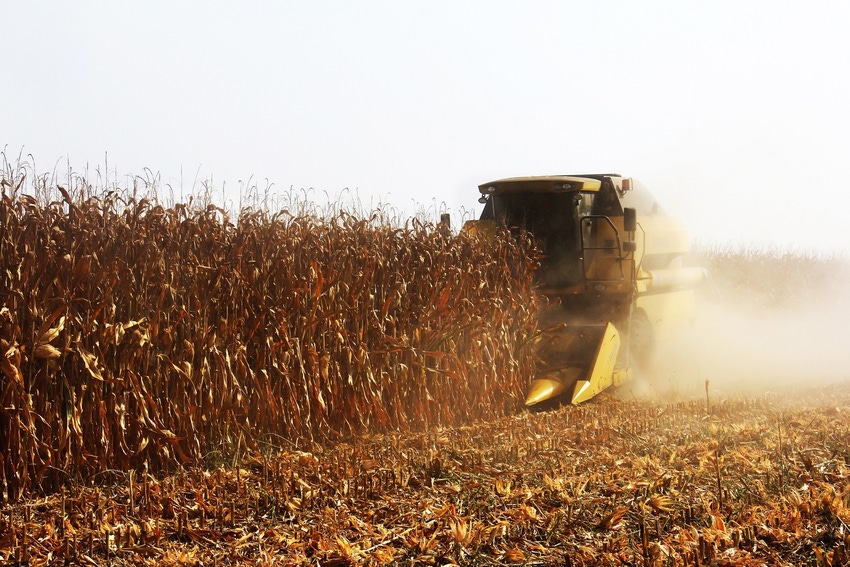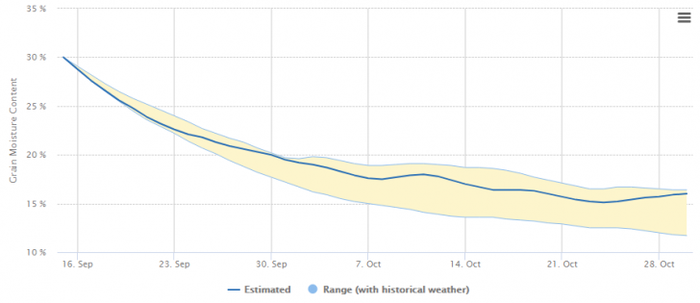September 11, 2019

One of the pressing questions this fall is when corn will reach maturity and if there is going to be enough time to dry down in the field. We have developed and released a corn grain dry down calculator that can help determine how quickly corn grain moisture will dry down in the field. The calculator can be applied at any location across the Corn Belt, from North Dakota to Missouri and from Nebraska to Ohio. Users select a map location and then enter a date and a kernel moisture content at that date. In turn, the tool projects in-field corn dry down. This tool can be used to estimate when a specific field will reach appropriately moisture for mechanical harvest (15-20% moisture) based on user input. The tool allows scenario planning by entering estimated dates and grain moisture for crops that are yet to mature compared to fields where crops have already matured. This is facilitated by the users ability to enter known (or estimated) dates and grain moisture.
Below is an example on how to use and interpret the tool. Let’s take a field in Story County, Iowa that reached black layer on 15 September at 30% grain moisture. In this situation it is estimated that on 19 September grain moisture will be 24.8% and 24 September grain moisture will be 21.8%. Furthermore, the grain dry down rate is estimated to slow down after 1 October. The yellow shaded area is the variance in grain moisture based on historical weather.

This tool prediction uses the daily temperature and relative humidity as the input for an algorithm developed from a multi-year, multi-location research trial in Iowa. This algorithm development can be found at: Evaluating maize and soybean grain dry down in the field with predictive algorithms and genotype-by-environment analysis. Where possible current temperature and relative humidity data is used. Forecasting beyond the current date is based on historical temperature and humidity information.
The effect of precipitation on dry down is indirectly captured by relative humidity whereby on rainy days the drying power of the air is low which is reflected by high relative humidity. We tested the prediction using data spanning from eastern North Dakota to southern Iowa and the tool predicted moisture decline with an error of 1.8%. The tool is best suited and recommended for use when crops reach physiological maturity, however, predictions can be made before that point.
Source: Iowa State University Extension
The source is solely responsible for the information provided and is wholly owned by the source. Informa Business Media and all its subsidiaries are not responsible for any of the content contained in this information asset.
You May Also Like




